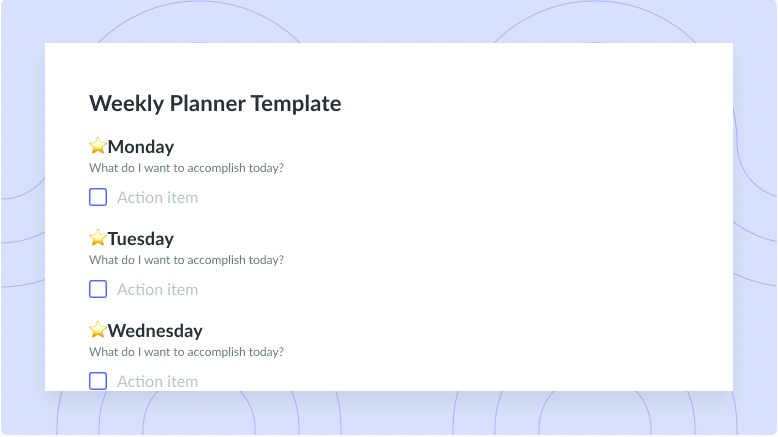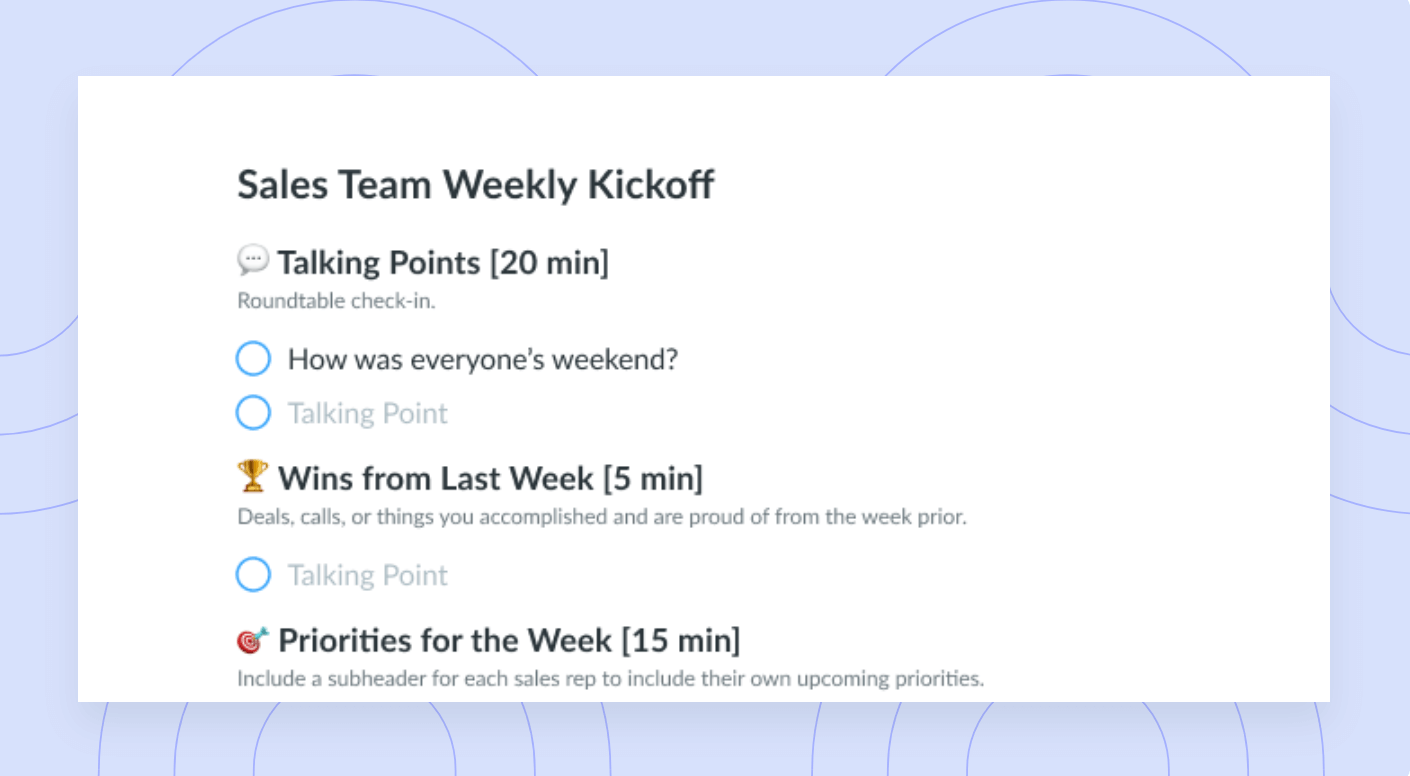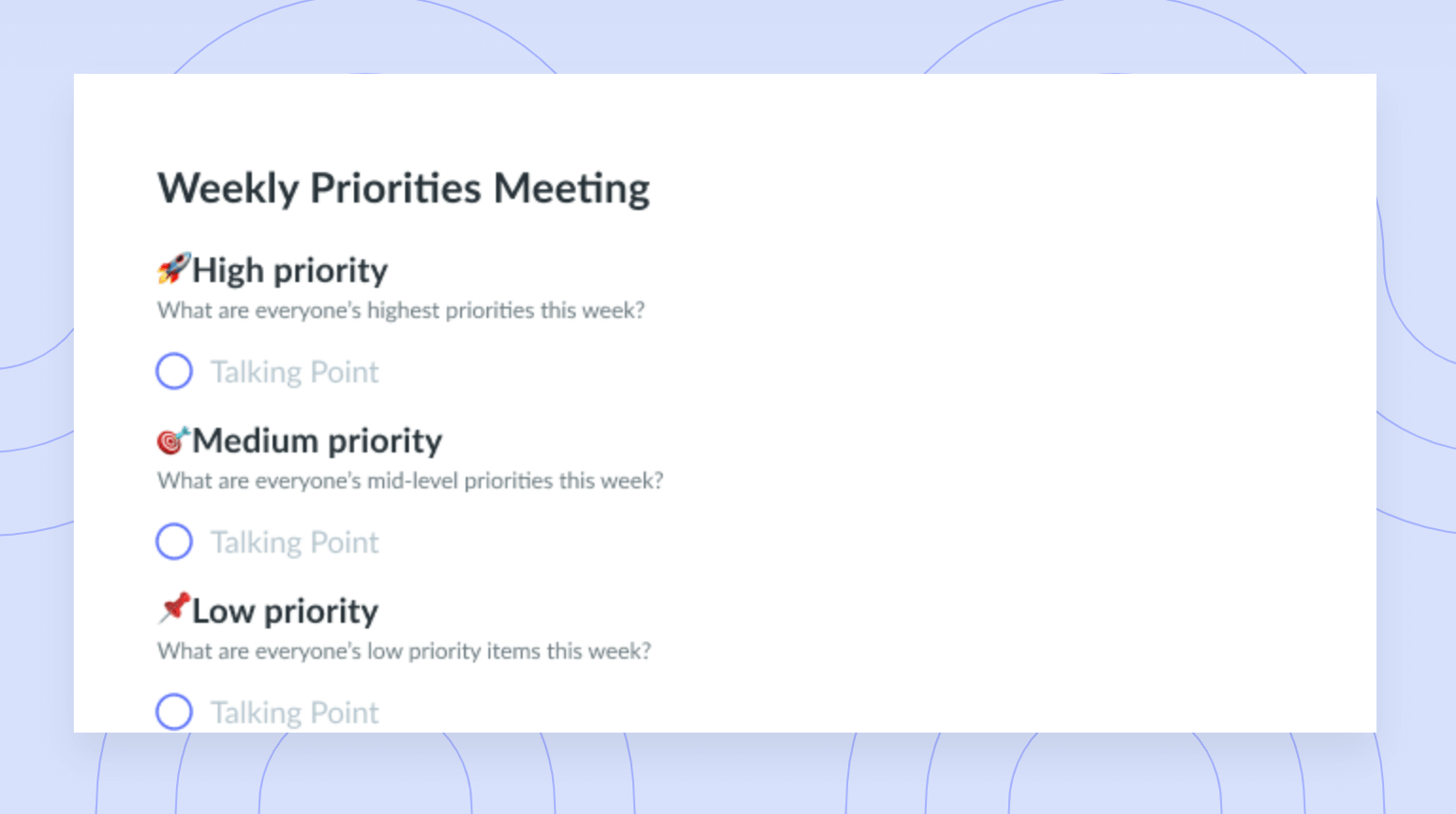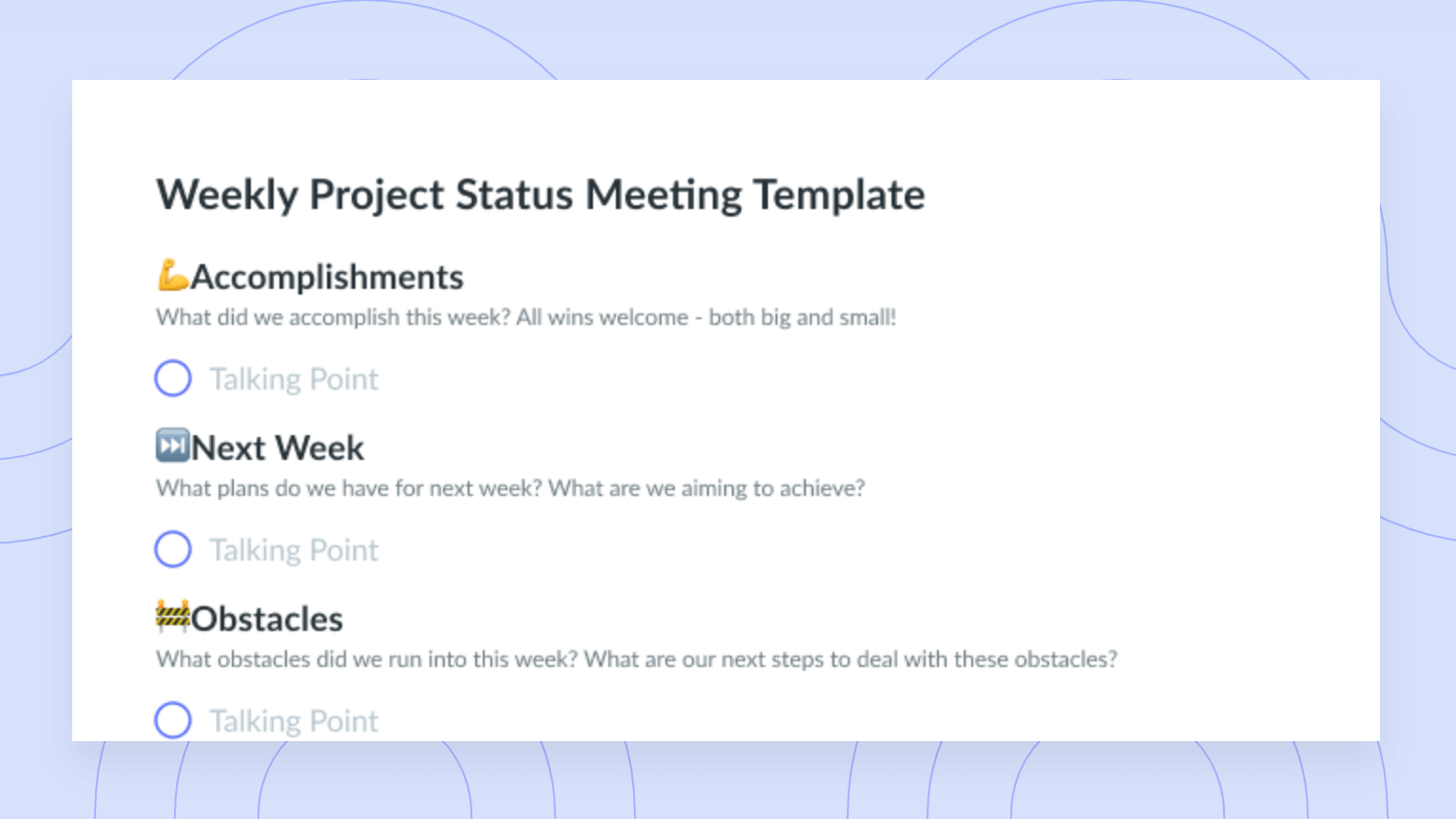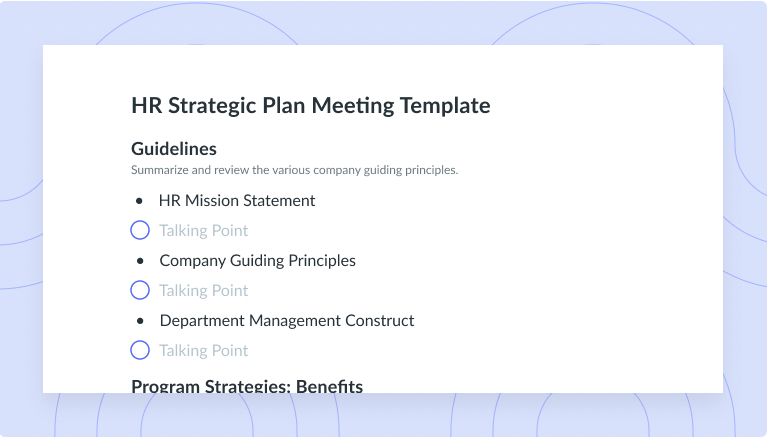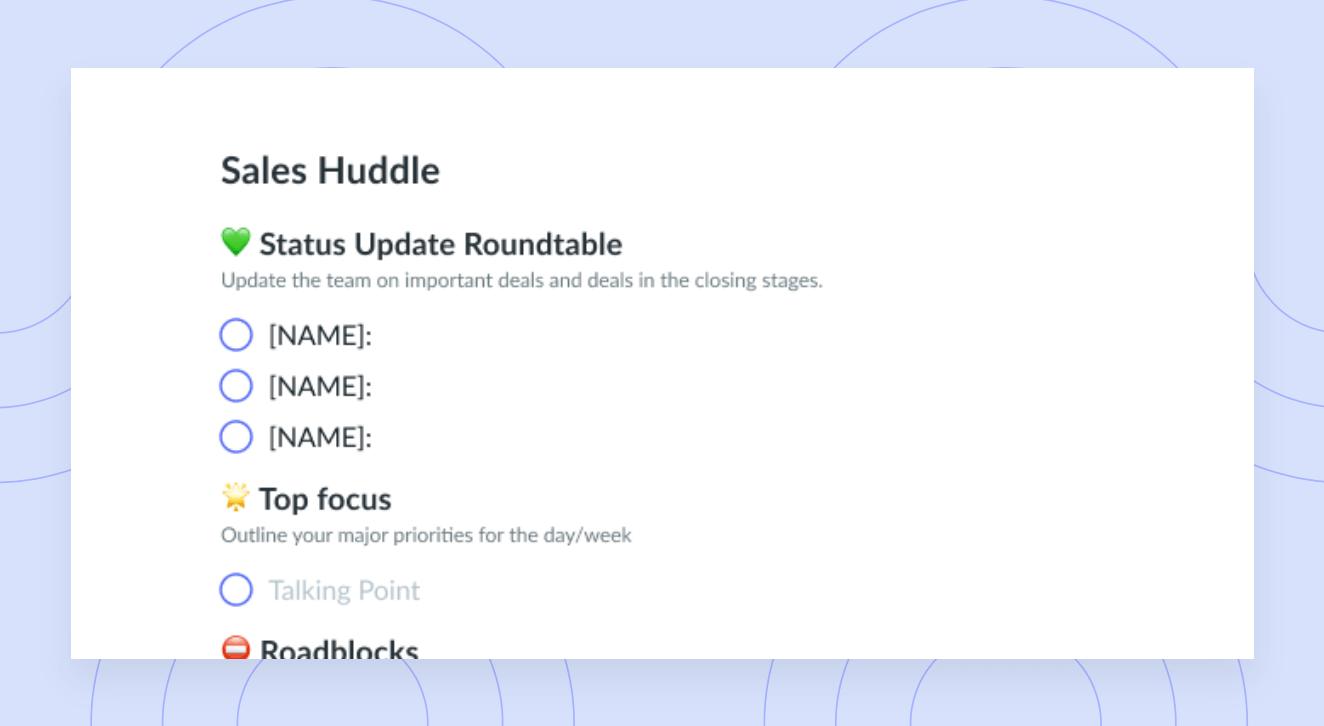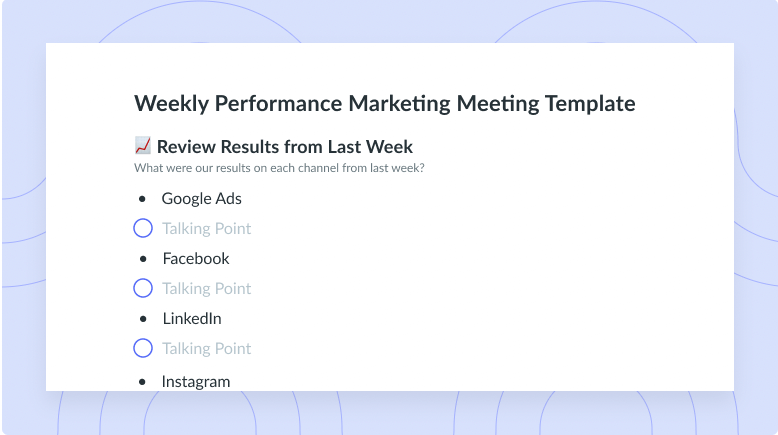The Ultimate Guide to a Weekly Work Plan Template
A weekly work plan is an outline of what you’ll accomplish each day of the week. Learn why creating this plan is so important and tips!
How often have you started the work day wondering what you have on your plate, which meetings are scheduled, or what due dates are approaching?
If the answer is “frequently” or you feel like you ask yourself this too often, it sounds like you’d benefit from getting prepared for everything the week has in store for you ahead of time by creating a weekly work plan.
- What is a weekly work plan?
- Why you should use a weekly work plan
- How to organize your weekly work plan template
- 5 tips for effectively completing your weekly work plan
- Free weekly work plan template
What is a weekly work plan?
A weekly work plan is exactly what it sounds like: it’s the plan you set out for yourself to outline what you’d like to accomplish or cross off your to-do list for the week. The purpose of this plan is to provide a visual map or daily schedule that presents how to navigate the numerous tasks you have on your plate in the best possible manner for your productivity and energy levels.

Organize your ideas, your way
Organize and prioritize your tasks so you start every day feeling calm and motivated with Fellow’s Streams!
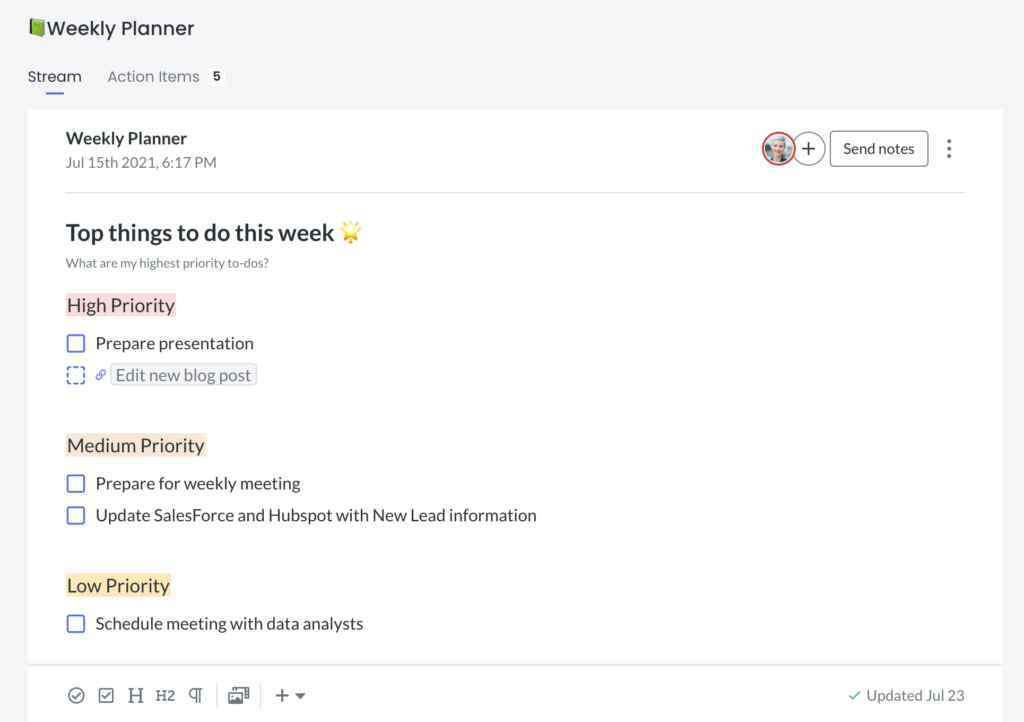
Why you should use a weekly work plan
Weekly work plans can be effective for both procrastinators and people who are always thinking about what’s around the corner. No matter what type of work you do or what you’re looking to accomplish for the week, here are three reasons taking the time to plan ahead is always worth it.
1Fosters organization
First, it promotes organization as it limits what type of tasks can fall through the cracks. Being organized and having a structure of what you can accomplish throughout the day allows you to better organize your week.
Plus, when you’re more organized, you’ll know exactly how you’re tracking the goals you’ve set for yourself.
2Prompts accountability
When you take the time to create a weekly work plan for yourself, there’s no “I’ll do it tomorrow” because you know what awaits you the next day. Holding yourself accountable to the items planned out for each day gives you much less wiggle room to push things off or shuffle things around, ensuring you stick to the routine you’ve set for yourself in the schedule.
3Boosts productivity
Everyone wants to be more productive and effective at their job, and a weekly work plan can get you there. This plan clarifies what tasks need to be prioritized and how much time you should spend on them, which means you can be as productive as possible each day.
Additionally, since you’ve planned ahead of time for each day, you know what to expect and are less caught off-guard by challenges or bottlenecks that happen out of nowhere. This organization also limits how often you feel the need to multitask, which can often decrease your overall productivity levels.
How to organize your weekly work plan template
Knowing how to organize your weekly work plan template is necessary to ensure it sets you up for success. While the below breakdown is the standard Monday through Friday work week, adjust it to what will be most effective for you and how your weeks typically look!
1Monday
In a perfect world, you start every work week on a Monday, ready to hit the ground running and full of energy. However, that’s not typically the case, so factor that into your template.
Plan to accomplish your low-energy tasks on Mondays, which may include scheduling meetings that need to take place, getting projects or more significant initiatives organized, or setting objectives for yourself or the team.
2Tuesday
Tuesdays and Wednesdays are when we typically have the most energy, so roll up your sleeves and ensure Tuesday has some of your higher energy tasks.
These tasks can include action items like brainstorming or problem solving, writing an article or project plan, or even putting a “block” on your calendar. This block can indicate when you want to focus on something that may be time-consuming, and you don’t want to be interrupted by meetings or quick syncs.
3Wednesday
Like Tuesday, Wednesday can be a high-energy work day. Since Wednesday may also be a low-meeting day, it can include another work block, be dedicated to a project that needs some creative brain waves, or be used to focus on completing the finishing touches on work from Tuesday. It’s also a good idea to give yourself some flexible time on Wednesday in case any emergencies or “stop what you’re doing and work on this” action items pop up throughout the week!
Factoring in this extra time as you use the weekly work plan template can save you some potential stress. And, if nothing pops up that needs your immediate time, use this block any other way you see fit!
4Thursday
The weekend is in sight, and energy levels usually start to dip on Thursday. Keep this in mind when planning ahead! Thursday is a great day of the week to schedule important meetings, product syncs, and one-one-ones, and to start planning what’s around the corner for the upcoming week. Thursdays are also good for planning more fun activities with your team, like a trivia session!
5Friday
Like Monday, energy levels are back to being pretty low on Fridays. Don’t make the mistake of scheduling a task you’ve been dreading or putting off a task until the last minute on Friday. With this in mind, plan your Fridays around completing open-ended work, long-term planning, reviewing a project timeline, or giving your team members some attention in the form of relationship and rapport building.
5 tips for effectively completing your weekly work plan
Now that you know how to organize your week and which tasks should be scheduled for which days, consider these five tips to make your plan as effective as possible.
- Time block the activities in your calendar
- Schedule buffer time
- Track all your tasks in one place
- Plan your week on Sunday
- Keep track of your priorities with a management software
1Time block the activities in your calendar
Knowing the ins and outs of time blocking can take your weekly plan to the next level. The time blocking method is a great way to organize each workday into specific blocks of time. Each block has a goal of completing a certain task or to-do list item, helping you to stay focused on only that task until it’s complete.
Time blocking gives you a concrete schedule, so nothing is left open-ended. For instance, on Monday, you can give yourself 45 minutes to an hour to check and reply to emails, whereas Tuesday and Wednesday may have three-hour time blocks to hone in and get focused on more important tasks. Then, Thursday may consist of blocks of meetings, and Friday can consist of two hours of timeline creation.
2Schedule buffer time
As we mentioned above, it’s always good to give yourself some buffer time. This time is ideal for:
- Attending last-minute meetings
- Handling emergencies or extremely challenging roadblocks
- Completing tasks that come out of nowhere with a short window of turnaround time
- Dedicating time to team members who need some help or assistance
- Finishing any task that took longer than you had expected
3Track all your tasks in one place
Take your productivity a notch in your weekly work plan template by keeping track of all your tasks in one cohesive location. For instance, in Fellow, it’s easier than ever to get more done since you can stay productive during and after every meeting that takes place during the week.
Directly in Fellow, you can assign action items and make clear decisions about who is doing what and by when. As you go about your weekly plan, you can cross off and mark complete the tasks assigned to you for an added boost of accomplishment. Plus, Fellow automatically carries over any incomplete items into your next meeting, so everyone is always held accountable.

4Plan your week on Sunday
While it’s not always fun to think about the work week on a Sunday, it’s a good idea to plan your week on Sunday. This way, on Monday morning when your energy may be a little low, there’s nothing to think about—you know exactly what awaits you each day and what you need to roll up your sleeves and tackle first.
5Keep track of your priorities with a management software
A huge part of a weekly work plan is knowing your priorities for the week. To keep track of which items are most important, will take the most amount of time, or have the earliest due date, it’s best to use management software like Fellow.
Plus, thanks to private Streams, you can easily organize your ideas, to-dos, and upcoming tasks based on priority. Streams are digital notepads that you can use to capture goals, ideas, and anything else that you need to remember to add to your weekly work plan. They’re made up of individual notes you may take throughout the day, and they show up in one continual stream of notes.
It’s common for users to take advantage of Streams as their weekly planner of action items sorted by priority. If you’re unsure how to use Streams, check out this video:
Free weekly work plan template
We’ve explained everything about creating a weekly work plan, but let’s take things one step further and give you a template to follow so you don’t have to make everything from scratch.
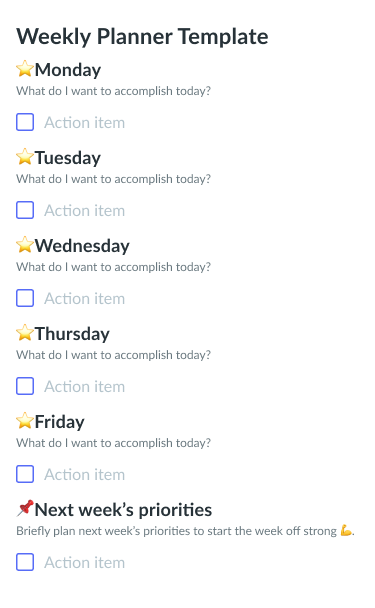
Conquer the work week
Armed with a weekly work week plan, you’ll be ready to tackle anything the week may have in store. You’ll start every new day feeling organized and knowing which items to which you’ll have to dedicate time. Chances are good you’ll be surprised by how much more you can accomplish when you’re fully prepared for each day.





![How to Plan Your Day [+ Free Planner Template]](https://fellow.app/wp-content/uploads/2022/06/How-to-Plan-Your-Day-2.jpg)




